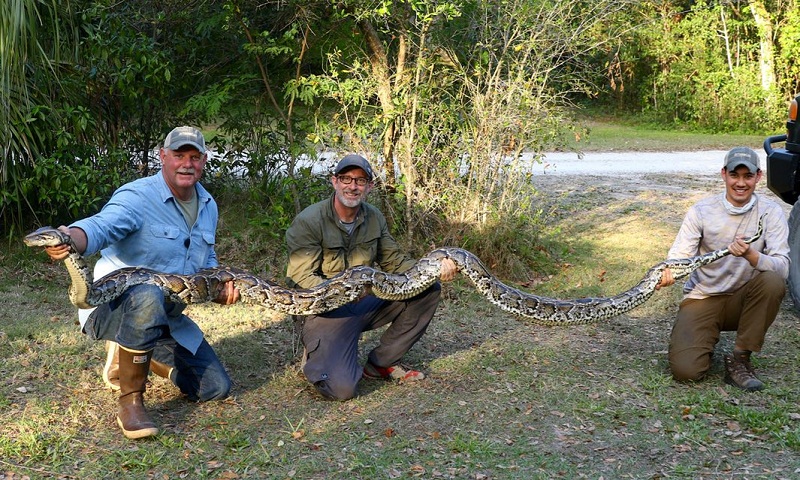Desperately wanted: python hunters to tackle Florida’s unwelcome intruder

Bill Booth struggles to recall the last time he saw a raccoon, a fox or a rabbit on one of his frequent hunting excursions deep into the swamps of the Florida Everglades. An outdoorsman all his life, he knows as well as anyone how the native wildlife once abundant across the vast wilderness has been all but wiped out by an invasion of a deadly species he is trying his hardest to remove: the Burmese python. By some estimates, up to 150,000 of the unwelcome intruders are swimming through the state’s 1.5m acres (600,000 hectares) of waterways, reproducing uncontrollably and consuming almost every living creature in their path, sometimes taking on even the previously undisputed king of the Everglades, the American alligator. It’s a growing problem that has led wildlife officials to conceive ever-more colourful attempts to try to eradicate, or at least contain, the giant snakes. With varying success, efforts have included training dedicated sniffer dogs, bringing in snake hunters from India’s mountain-dwelling Irula tribe, and, most recently, advertising for minimum-wage civilian python-catchers on a two-month contract for a hunt beginning in April. Booth, who takes his small crew on regular hunts into the most remote parts of the ecologically fragile wetlands, is at the forefront of another initiative. The Miami-born firefighter and his fellow “Cypress Boys” are the current champions of the Python Challenge, a month-long hunt devised by the Florida fish and wildlife conservation commission (FWC) in which members of the public are encouraged to venture into the Everglades, tracking and capturing as many snakes as they can. But while Booth nabbed 33 of the 106 pythons landed in the 2016 challenge, including a 15-footer just 3ft short of the Florida record 18ft 8in snakelanded in 2013, he acknowledges the tally had little to no impact on the wider problem. “There’s no way humanly possible to go out there and catch them and get rid of them altogether,” he said. “It’s just too much of a vast area. “There’s over a million acres out there, areas down in the national park that humans have hardly ever been to, areas that are off-limits, and you’ve got snakes everywhere. When I was a little kid, the Everglades was my backyard and I appreciated all the wildlife, but over the years these pythons have taken over and taken a toll on native wildlife. Now you barely see any other wildlife, there’s hardly any birds and you don’t see any raccoons. In four years of hunting pretty regularly down there, we might have seen a couple of river otters, but other than that there’s nothing there.”
Read More:
http://www.theguardian.com/us-news/2017/mar/27/florida-burmese-python-hunters#img-4

